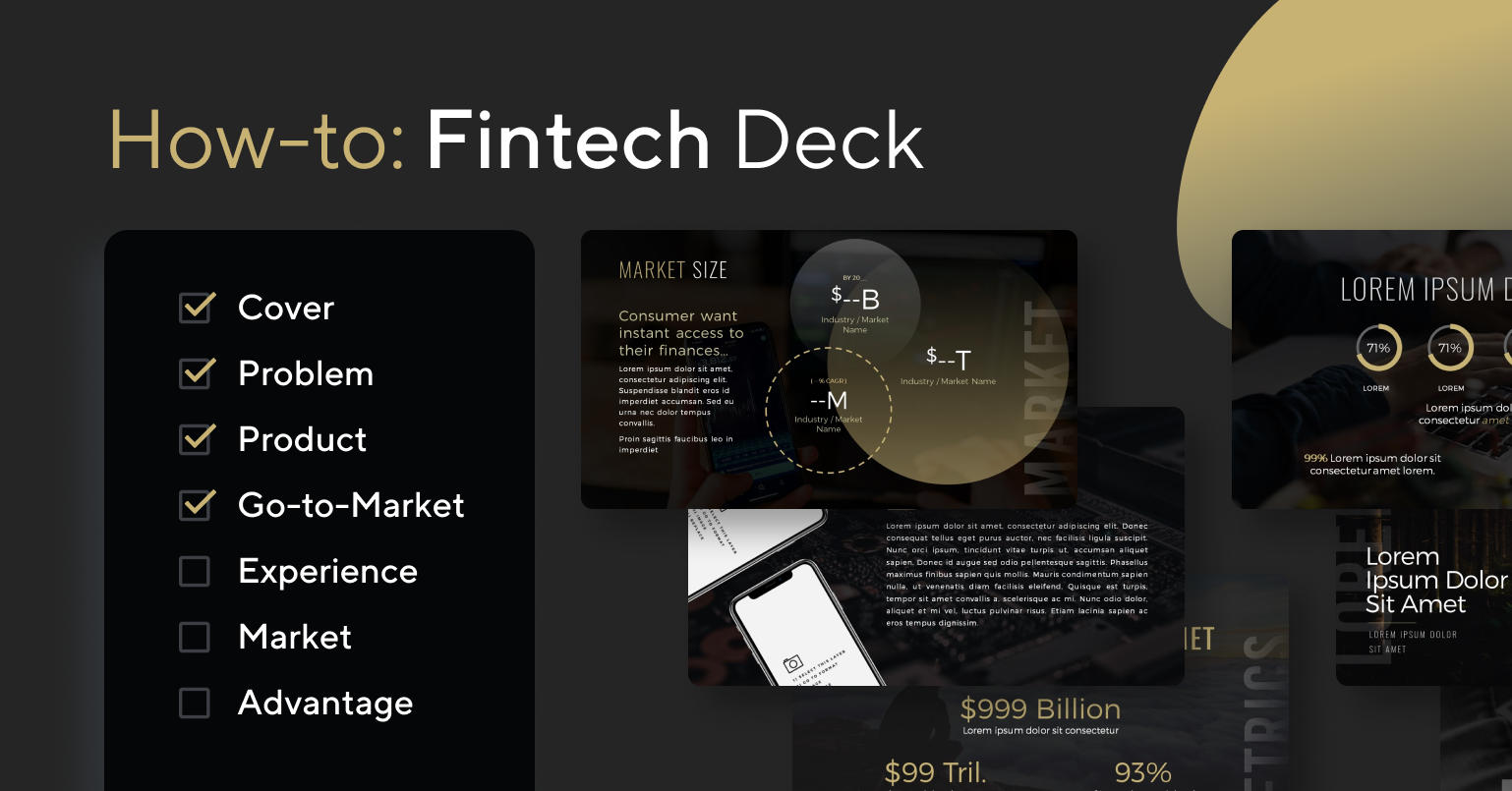FinTech is one of the most competitive sectors due to the large influx of as many startups. As such, creating a fintech pitch deck for potential investors requires adequate research, confidence, competency, and great focus. No investor wants to run at loss; your task is to convince them beyond reasonable doubts with pure facts and data.
Since investors are solely concerned about making a high return on their investment, your fintech pitch deck should be tailored towards making a profit. In this write-up, we’ll walk you through the best steps to follow and important information to include in your presentation. Follow the key instructions highlighted below, and your chances of success will be far greater!
What slides should you include your FinTech pitch deck?
Most pitch decks (fintech or otherwise) require a minimum of 10 – 15 slides. Always ensure to make the slides very simple and straight to the point because bulky and unnecessary information can bore your investors.
-
Cover Slide
Your cover slide should be catchy and be able to draw the attention of your investors to the main purpose of the presentation. It must be properly arranged with an outstanding and meaningful logo for your startup. Be sure that all the slides in your fintech pitch deck follow the same theme & styles as the remaining slides.
-
Problem Slide
There can’t be a solution without an impending problem. Therefore, your next fintech pitch deck must explain which major problems in the Fintech industry you aim to address. Focus on a perfect way to present these problems to bring out the emotions in the investors. You should add a creative story to back up your claims.
-
Solution Slide
Now that they’re aware of the problems, it’s now time you present the possible financial solutions. This slide should contain solutions to the corresponding problems listed on the previous slide. Emphasize how your fintech product is the ultimate solution. Remember that investors are more interested in leveraging on your Fintech product to make a reasonable amount of profit.
-
Model & Pricing Slide
This slide will contain the various ways your startup will generate revenue from the fintech product. You have to present convincing and real-time data to your investors at this point. Ensure your business model on this slide is coherent and also depict that a large number of potential customers are interested in the product. If you already have customers, kindly include the numbers here.
-
Market & Competition Slide
A successful business must be able to survive and dominate amid competition. Fintech, for example, is one of the most competitive sectors and many startups are trooping in. As such, your fintech pitch deck should be able to address the methods and strategies you’ll adopt to beat the competition, as well as where you stand relative to the rest of the market.
-
Traction & Metrics Slide
This is the slide where you’ll convince the investors that your business will survive for a very long time. Make sure you include key metrics such as your customer’s growth rate or number of active social media followers on Facebook, Twitter, and Instagram on this slide. You should also add other fintech-specific growth metrics available to you.
-
Go-to-Market Slide
Customer Acquisition Cost (CAC) is the cost incurred in the process of acquiring each new customer. Apart from simply stating your current or expected CAC, your pitch should also explain to your investors how you intend to bring in a new customer to patronize your financial product.
-
Team Slide
Use this slide to display the team working on this project because your investors will be very much interested in knowing the team members. You should also highlight the roles of each member to the success of the project as a whole. In a situation where you have a very large team, you can just name the important members of the team to avoid overcrowding the team slide.
-
Ask Slide
Make sure to request the actual cost of the project from your investors. Give a detailed analysis of how the funds are going to be spent. Do not hesitate to ask your investor if they have any questions about the project.
-
Call-to-Action Slide
Catch your investor attention with a clear call-to-action (CTA) with this last slide of the presentation. Every pitch should include contact options and guides for investors — this slide is the perfect place to do so.
What key topics should a FinTech pitch deck address?
Entrepreneurs in the fintech space are most curious as to which “must-have” questions should be answered in their pitch deck. We came up with the shortlist below based on an analysis of 20+ fintech decks we created — several of which closed multi-million-dollar distribution deals & investments.
Below are the questions every fintech deck should answer:
- Who is interested in your fintech product?
- What makes your fintech product unique?
- What is your pricing and profit model?
- What traction have you achieved?
- How do you acquire customers for your business?
- What investment (or deal) are you looking for? Why?
- What are your goals & key milestones? What are you going to achieve?
Designing a fintech pitch deck? Check this out:
You might be interested in the popular Fintech Pitch Deck Template designed by our team at VIP.graphics: cutting-edge slides based on decks that closed millions in deals & investments for orgs of all sizes: from high-growth startups to Fortune 100 corporations. Super simple to customize in PowerPoint or Keynote, this template offers you ready-made elements & all the essential slides to help your business stand out: it’s a matter of minutes to create and share this convincing & professional deck with your stakeholders & investors — learn more here.


